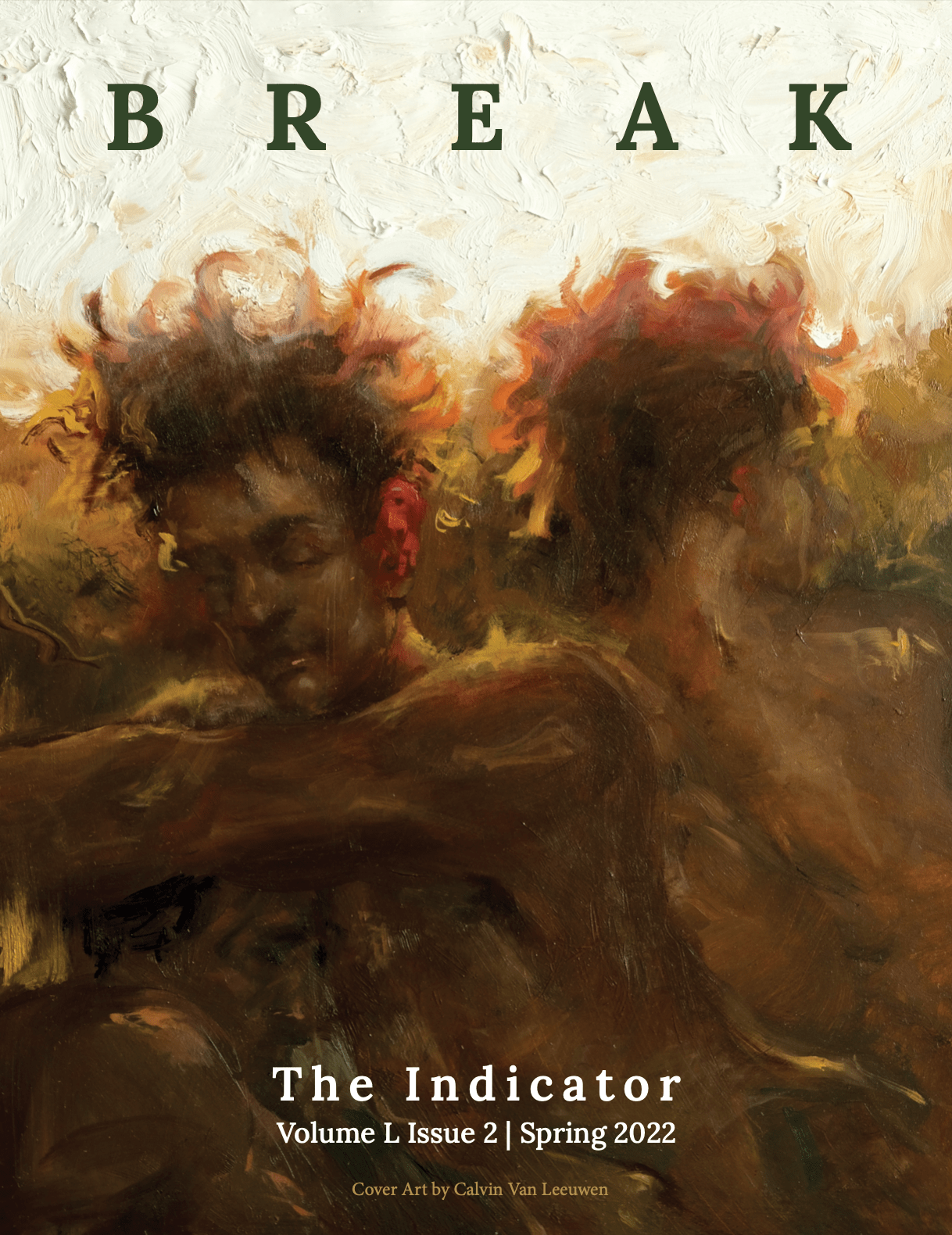Editor’s Note
Dear Readers,
Another semester, another issue! The writers, editors, and artists of The Indicator have worked so hard to create the issue you have now, and we are so proud of all the work they have done over the last few months. Having been members of The Indicator all four years of college, we are amazed with the growth of the magazine. From all of our daring and passionate new faces to the commitment of our returning members – it has been an absolute pleasure to witness our little creative community expand, both in numbers and in their own personal work. We have been so honored to serve as the Editors-in-Chief of The Indicator over the last year and we know that those who come after us will continue to develop the magazine and club far beyond what we could have. Everyone involved in the issue, with a special shout-out to Gabby Avena, our brilliant Indesign master, and Susan Lee, our most supportive and amazing Vice EIC, have played indispensable roles in the creation of this year’s issue. We are so grateful to you all for giving us the opportunity to work with you and we look forward to seeing all the future work you do!
And now, our introductions to the semester’s theme: Break.
Hannah:
“Break” indicates an interruption of sequential experience. It is a moment of shift, of a thrust from one state of being into another. Often, break is the loss of something, whether physically, emotionally, or aesthetically, and the gain of some, in many cases, unexpected other thing, which rises from that negative space. Sometimes, breaks occur intentionally, invited and anticipated to fracture a continuous state; other times, they are entirely accidental, arriving suddenly to indent and alter patterns of familiar design. In almost all cases, they are unmistakable, even if the point fissure can only be determined in retrospect. Break is atomization. Break is the outline. Break is transformation.
The pieces in this issue attempt to articulate the nuances encapsulated within and looming around the word “break” – the moments leading up to, the point of disassembly, the aftermath of, and the understanding of from a perspective far removed.
Kalidas:
Breaks. There are many kinds. In some ways this makes it difficult to articulate this issue. Some breaks were within the internal world of the speaker. In other pieces, there was a break in a personal relationship. In all these pieces, I would say two things are consistent. Even amongst pieces in which larger cultural dynamics loomed large, the break within the piece was always deeply personal and private. Most of the pieces reflect this, I think, insofar as they have only one or two active characters. That is to say they are largely interested
in the intimacies of self-relation—when one breaks how do they move themself through that breakage, how do they recover themself, what of themself do they lose. That, and the failures and possibilities of one-on-one relationships:
The other consistent thing, which is maybe constitutive of every break, is the breaking point. That is, there is an event, a moment at which the break happens. And each piece sits somewhere in proximity to this moment. Some pieces are at the moment of the break. Some are considering the way in which tension builds, how collective moments lead to a rupture. Some sit in the anxiety of foreseeing a break, until that anxiety, and what inspired it, is itself a break. Some are years beyond the breaking point and looking for ways to heal from it or to recover what was lost. Others celebrate what that break made possible. And some look at the moment when we break, or we break the world around us, in order to live. Others still imagine realities other than alternatives in which the break never happens.
Thank you all again and enjoy!
Sincerely,
Kalidas Shanti & Hannah Zhang Class of 2022
Editors-in-Chief
Cover Art by Calvin Van Leeuwen ‘25
cvanleeuwen25@amherst.edu
